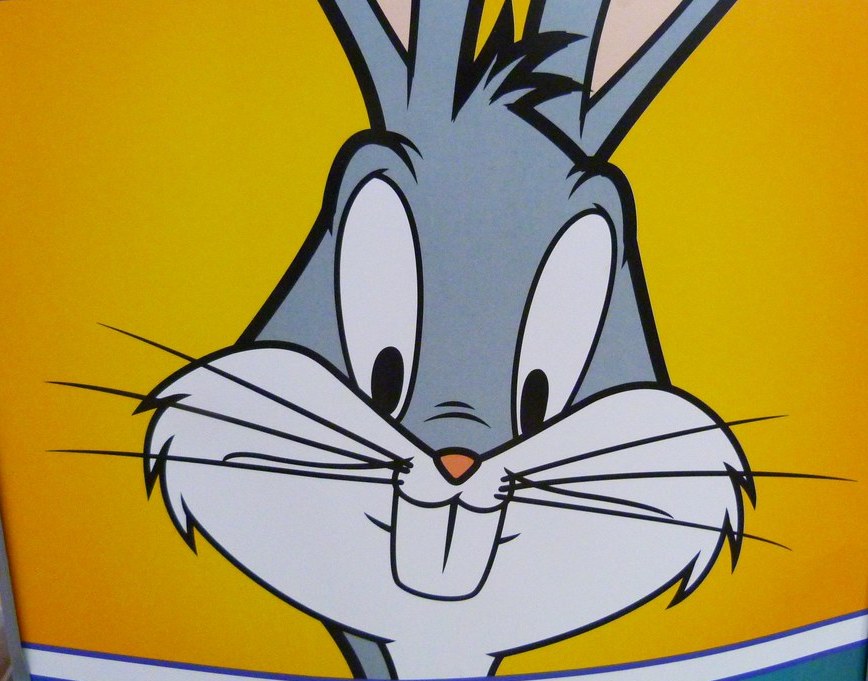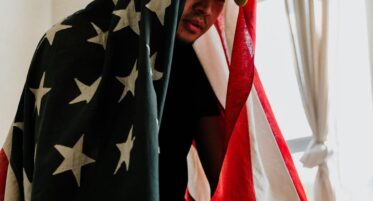
Prompt Images
I never loved the duck. He bordered on abrasive, was unlovingly stupid, and a touch mean-spirited. That his name, and therefore persona, was Daffy didn’t seem enough to excuse his foibles. He tended, however, to co-star with Elmer Fudd. I was a Fudd fan. Fudd’s lisp was endearing and though he usually brandished a shotgun, he typically failed to be successful with it. No harm, no fowl.
My favorite childhood stories were not book-based. I have hazy memories of a small, curious monkey named George and he was likable enough, but The Man with the Yellow Hat was off-putting. What was his game? I don’t know, but he portended Stephen King’s scary characters decades in the future; The Low Men in Yellow Coats and the yellow-card man in 11.22.63. Perhaps my future self was supernaturally warning the little kid that I was in the ’60s to be wary of this guy hanging around with a little monkey.
I preferred cartoons to books.
Looney Tunes’ Merrie Melodies productions were the best. TV offered second shelf cartoons: Quick Draw McGraw and his sidekick, Baba Looey; Tom and Jerry; Underdog and his love interest, Sweet Polly Purebred; Sherman and Peabody; Rocket J. Squirrel and his moose buddy, Bullwinkle. All these had their place, but given a choice, I went with Looney Tunes.
After-school fare was dominated by kids’ shows on the local stations. While the networks showed soap operas—anathema—the independents, channels 5, 9, and 11, aired ‘toons non-stop. (A giant no, thank you, to Mr. Rogers’ Neighborhood on PBS’s channel 13; I could not abide his saccharine style.) Plenty of day baseball games aired, the Yankees on channel 11 and the Mets on channel 9; the Three Stooges and Superman too—favorites all—but those merit their own stories.
We only had black & white TVs in my childhood so I didn’t know what I was missing, but lack of color did not detract from enjoying Looney Tunes’ lunacy.
Beyond Daffy and Elmer Fudd, there was Sylvester the Cat—also sporting a lisp—and the prey he permanently sought, Tweety Bird. There was guns-a-blazin’, hot tempered, Yosemite Sam and the quick-witted Mexican mouse, Speedy Gonzalez. The stuttering Porky Pig was solid, but unspectacular. Pepé La Pew, a Parisian skunk with a stereotypical French way about him, was in constant romantic pursuit of a demure pussycat—a little rapey in retrospect. There was the inseparable duo of Road Runner and Wile E. Coyote, self-anointed super genius, who concocted elaborate schemes and Rube Goldberg devices to catch his nemesis, the lightning fast bird. Wile E. failed consistently and spectacularly and would have done well to consider ending his business relationship with the Acme company that sold him all manner of contraptions that never worked.
And, two characters with magnificent names—Foghorn Leghorn, a giant chicken with a booming Southern drawl—battled his archenemy, the hound, in an endless war of attrition. And Michigan J. Frog, a baritone who crooned like Al Jolson and fancied a top hat, tails, and a walking stick. Michigan J. appeared in only one epic cartoon, entitled “One Froggy Evening.” It was perfect; seven minutes of greed, farce, comedy, pathos, and a bit of science fiction, all enmeshed in Vaudevillian song and dance.
Splayed on the floor, worshiping the TV, I occasionally decided that today would bring the cartoon to reveal the answer; how many impossible things were about to unfold? I typically lost both count and interest as the impossibilities amplified, too numerous to count, too interspersed to parse, too late understanding that mine was a senseless question.
Bugs Bunny was and remains my favorite.
His cartoons were a touch more adult. Bugs exposed me to opera, soaring classical music, and American history, bastardized though it was. He augmented my love of baseball in “Baseball Bugs.” “Hair Raising Hare” spoofed horror films, “Racketeer Rabbit” introduced me to the gangster film genre, and “Slick Hare” went old Hollywood with Bogart and Bacall (and cameos by Frank Sinatra and Ray Milland). “Rabbit Hood” featured Bugs portraying both the King of England and a high-pressure, real estate salesman—what range!—in a picture that ended with a fly-in by Errol Flynn as Robin Hood.
Bugs Bunny’s intelligence—though, to be fair, he only had to outsmart a bumbling pig, an incompetent Elmer, and a daffy duck—was his forte. He bested them all, from a Peter Lorre caricature of “the mad scientist” to an overbearing and incompetent Sheriff of Nottingham. Most resonating of all was the wabbit’s sarcasm, which amped up the jokes, bits, and the whole gestalt of the five to eight minutes of joy.
Bugs Bunny, Superstar… king of them all.
END



